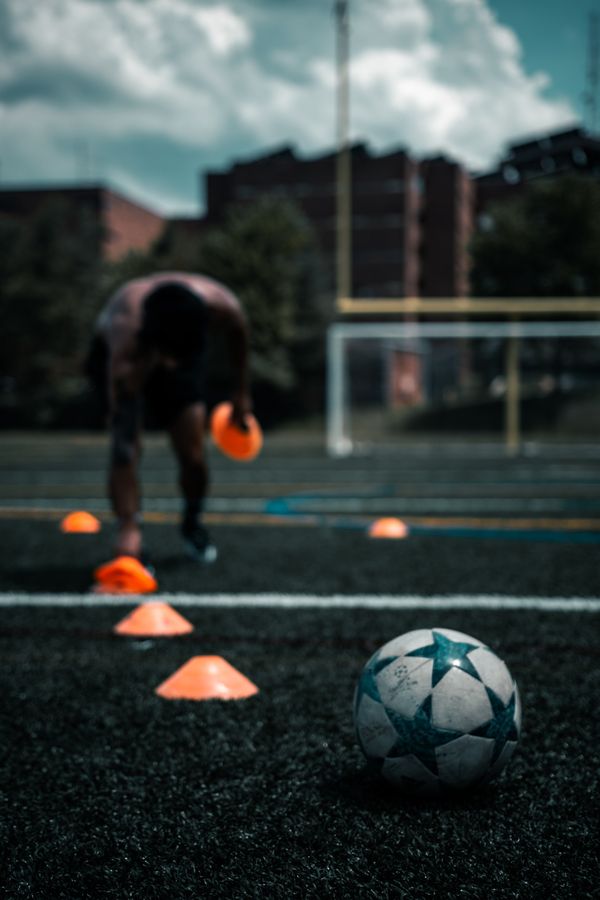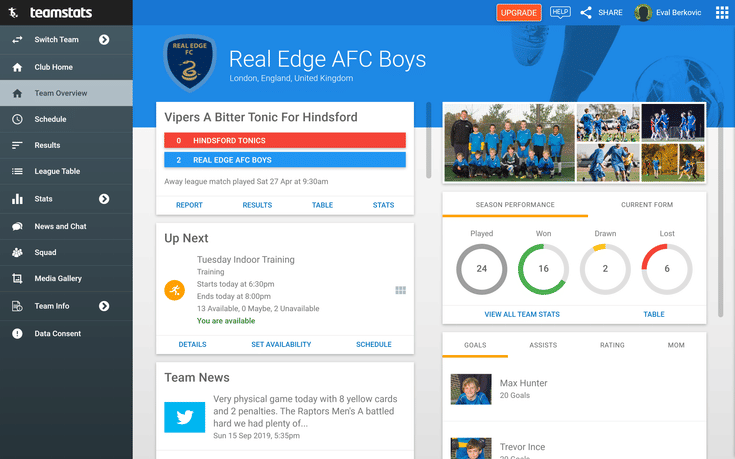As football season approaches, coaches at all levels are gearing up to provide their players with the best training experience possible. Having the right coaching kit is essential for effective practice sessions, skill development, and team management. From training aids to organisational tools, a well-equipped coach can make a significant difference in player performance and team success.
Quality football coaching equipment includes essential items such as cones, marker discs, agility ladders, bibs, stopwatches, and tactical boards that enable coaches to run structured, efficient training sessions. While professional clubs may have access to advanced technology and equipment, grassroots teams can achieve excellent results with fundamental tools that focus on core skills and team coordination. Many brands now offer complete coaching bundles that include everything needed to conduct comprehensive practices.
The evolution of coaching gear has made sophisticated training methods accessible to amateur teams throughout the UK. Modern coaching kits often include specialised equipment designed to develop specific skills like ball control, passing accuracy, and positional awareness. As youth football continues to grow in popularity, manufacturers have responded by creating equipment specifically sized for younger players, ensuring that the next generation of footballers receives appropriate training from the earliest stages of development.
Essential Components of Football Coaching
A well-equipped football coaching kit contains carefully selected items that enhance training sessions and improve player development. The right tools enable coaches to run effective drills while addressing technical, tactical, physical, and psychological aspects of the game.
Training Aids and Their Functions
Quality footballs are the foundation of any coaching kit, with size variations appropriate for different age groups (size 3 for under-8s, size 4 for under-12s, and size 5 for older players). A collection of at least 10-15 balls ensures smooth session flow without constant interruptions.
Marker cones in various colours create defined training areas, simulate obstacles, and establish boundaries for drills. These versatile tools can indicate passing targets, dribbling routes, and defensive positions.
Coloured bibs (pinnies) instantly identify teams during practice matches. Having multiple sets allows coaches to switch team compositions without confusion.
Agility ladders and hurdles develop crucial footwork, coordination, and explosive movements. These portable tools enhance speed, balance, and spatial awareness—all vital qualities for football players at every level.
Selecting the Right Football Training Equipment
When building a coaching kit, prioritise versatility and durability. Coaching boards with magnetic or erasable surfaces provide tactical visualisation during team talks. The ability to demonstrate formations and movements helps players understand positioning concepts.
Pop-up goals offer flexibility for small-sided games and finishing drills. Their portable nature allows coaches to create multiple practice stations simultaneously, maximising participation and touch time.
Consider these essential factors when selecting equipment:
- Portability: Equipment should be lightweight and easy to transport
- Weather resistance: Items must withstand various conditions
- Storage requirements: Compact items save space in storage and transit
- Cost-effectiveness: Quality balanced with budget constraints
For youth teams, rebounders provide excellent technical development opportunities. These tools allow players to practice passing, receiving, and shooting with immediate feedback, even when training independently.
Enhancing Player Skills Through Training Drills
Training drills form the backbone of effective player development in football. Targeted exercises help players refine specific techniques while providing coaches with opportunities to observe and correct form, ultimately translating practice performance into match-day success.
Ball Control and Passing Exercises
Developing exceptional ball control requires deliberate practice with the right equipment. Agility ladders are invaluable for improving first touch and quick footwork. Players can practise moving laterally through the ladder while controlling a ball passed from a teammate.
Cone drills offer versatile options for passing practice. Set up zigzag patterns to work on short passing accuracy or wider configurations for longer distribution. A popular exercise involves players forming a triangle with training cones, performing one-touch passes whilst moving around the markers.
For more advanced training, rebounders provide instant ball return, allowing players to work independently on their receiving and passing technique. These tools are particularly effective for developing weaker foot control.
Weighted balls can also enhance control skills, as they require greater strength to manipulate. Once players return to standard balls, their touch often feels significantly improved.
Improving Throwing Accuracy and Technique
Goalkeepers and outfield players alike benefit from throwing technique drills. Target hoops hung from crossbars provide excellent visual markers for distribution practice. These can be positioned at various heights and distances to simulate match scenarios.
Training hurdles help keepers work on their diving technique and recovery speed. Set these at appropriate heights to encourage proper form without risking injury.
For throw-in practice, lightweight training mannequins create realistic match conditions. Players can focus on distance, accuracy and technique whilst adhering to proper form requirements.
Reaction training balls, which bounce unpredictably, help keepers sharpen their reflexes and handling. These specialised tools simulate the unpredictable nature of deflections during matches.
Video analysis equipment, though not physical training gear, proves essential for reviewing and improving throwing mechanics through immediate visual feedback.
Defensive Strategies and Drills
Defensive training requires equipment that simulates opponent movements and challenges. Tackle dummies provide resistance for defenders working on proper tackling technique without risk of player-to-player contact injuries.
Shadow defenders—pole-mounted mannequins—help players practise positioning and interception skills. These can be arranged to replicate common attacking formations, allowing defenders to work on their spacing and coverage.
Reaction belts, where players are tethered together, develop coordination between defensive partners. The lead defender must communicate effectively while the trailing partner reacts to directional changes.
For pressing drills, agility poles help simulate pressing triggers and defensive shape. Players navigate through the poles while maintaining proper defensive posture and positioning.
Speed rings improve footwork for defenders who need quick lateral movement when jockeying attackers. Regular practice develops the muscle memory necessary for effective defensive positioning.
Free Kick Mannequins for Set Piece Practice
Free kick mannequins have revolutionised set piece training in modern football. Adjustable mannequins allow coaches to create realistic defensive walls that match opponents' typical formations. The best models feature flexible springs that absorb impact whilst maintaining position.
Positioning markers work alongside mannequins to help designate proper player placement for both attacking and defending set pieces. These create consistent reference points for repeated practice sessions.
Practising with mannequins allows players to visualise ball trajectory over or around obstacles. Advanced teams often use different coloured mannequins to represent specific opposition players and their heights.
For corner kick training, heavier base models ensure stability when balls are crossed at pace into the penalty area. Some professional training grounds feature permanent installation points to secure mannequins during more intense sessions.
Regular practice with these tools helps teams develop intricate set-piece routines that can become valuable scoring opportunities during competitive matches.
Boosting Team Performance with Speed and Fitness Training
Speed and fitness form the backbone of successful football teams at all levels. When players possess superior physical conditioning, they can execute tactical plans more effectively and maintain performance throughout the full 90 minutes.
Implementing Speed Training in Sessions
Speed training is critical for developing quicker, more explosive players on the pitch. Football-specific speed drills should focus on short bursts of acceleration rather than long-distance sprinting, as most crucial moments in matches happen within 5-10 metre distances.
Incorporate ladder drills to develop quick footwork and agility. These exercises improve coordination and neural pathways that enhance reaction time on the pitch. Set up cone drills with varying distances to simulate match situations where players need to change direction rapidly.
Resistance training using specialised equipment like parachutes or resistance bands can significantly improve explosive power. Players should perform these drills 2-3 times weekly, with proper recovery between sessions.
Key speed exercises to include:
- 10-20m sprint drills
- Agility cone patterns
- Reactive starts from various positions
- Short hill sprints (8-12 seconds)
Incorporating Fitness Regimens for Improved Stamina
Fitness training must balance aerobic and anaerobic elements to match the demands of football. High-intensity interval training (HIIT) replicates the stop-start nature of matches far better than steady-state cardio.
Small-sided games provide an excellent fitness stimulus whilst maintaining technical engagement. A 4v4 match in a confined space forces players to work intensely with minimal rest, building stamina in a football-specific context.
Circuit training incorporating football movements proves highly effective. Design stations that combine cardiovascular elements with strength components like medicine ball exercises, bodyweight movements and core stability work.
Weekly fitness schedule example:
| Day | Focus | Sample Activity |
|---|---|---|
| Monday | Recovery | Light technical work |
| Tuesday | High intensity | Sprint intervals, HIIT |
| Wednesday | Strength | Circuit training |
| Thursday | Match simulation | Small-sided games |
| Friday | Speed/Agility | Ladder drills, reaction work |
Monitor fitness levels regularly using the Yo-Yo test or bleep test to track improvements and adjust training intensity accordingly.













